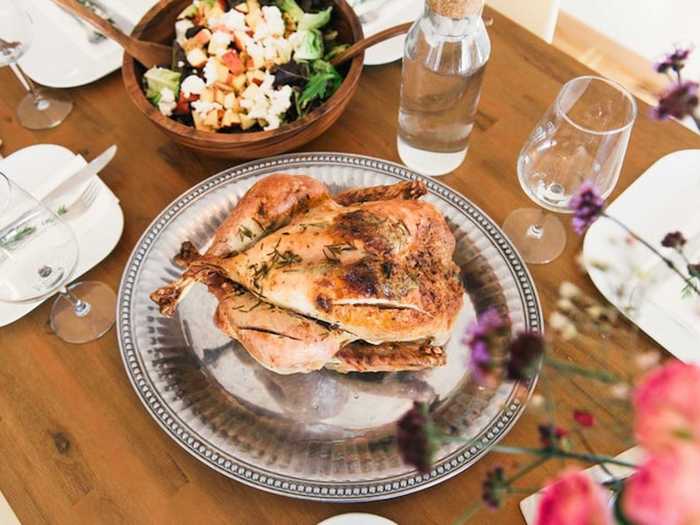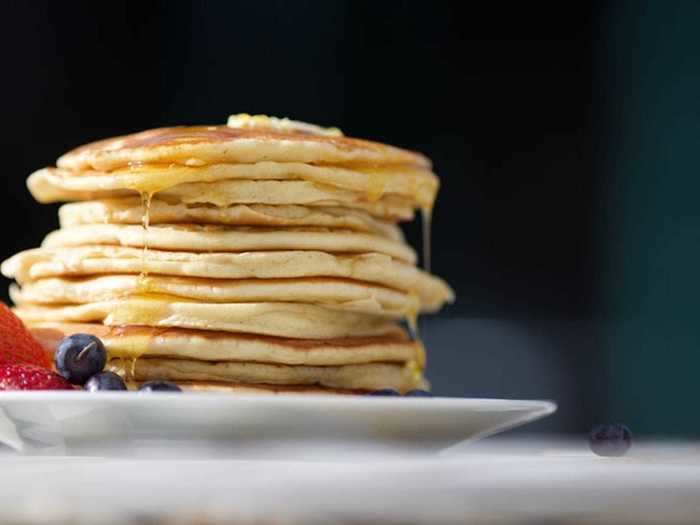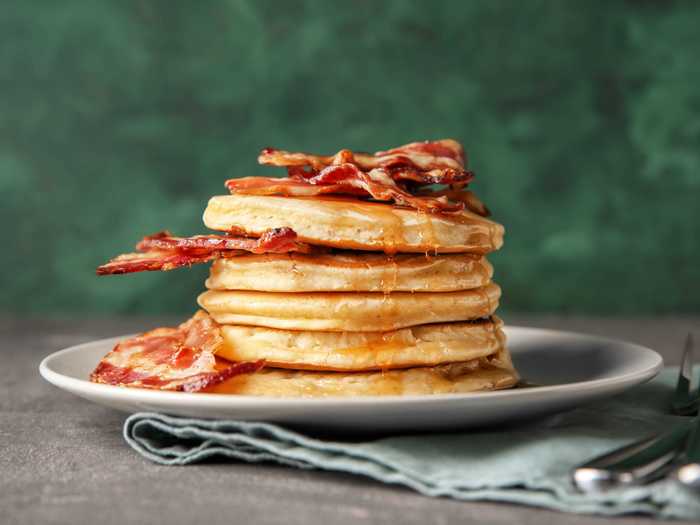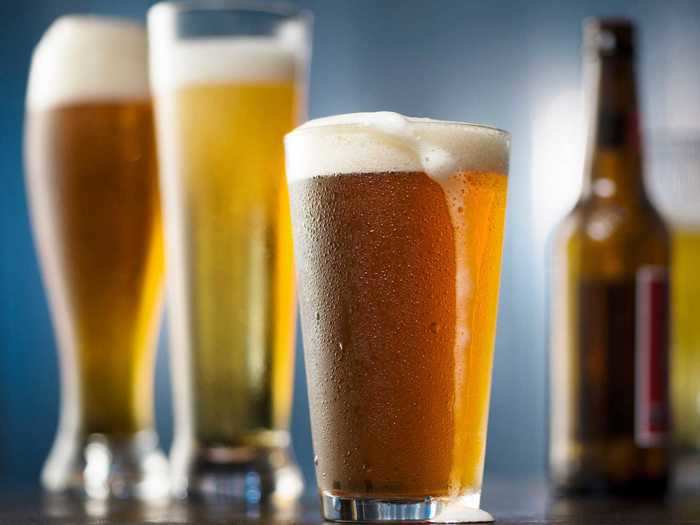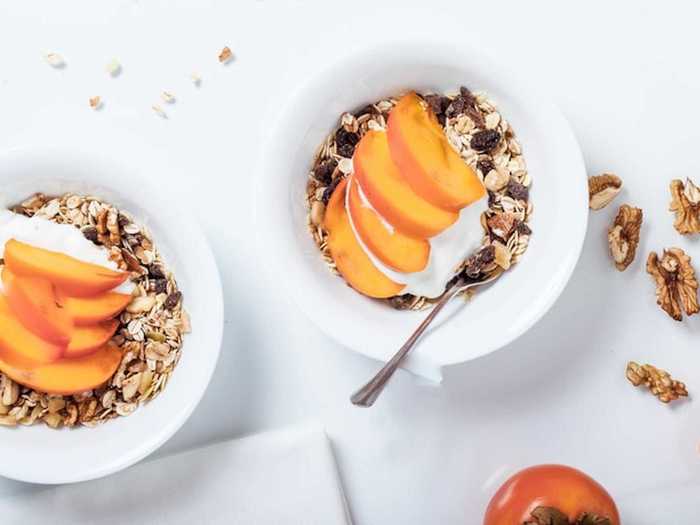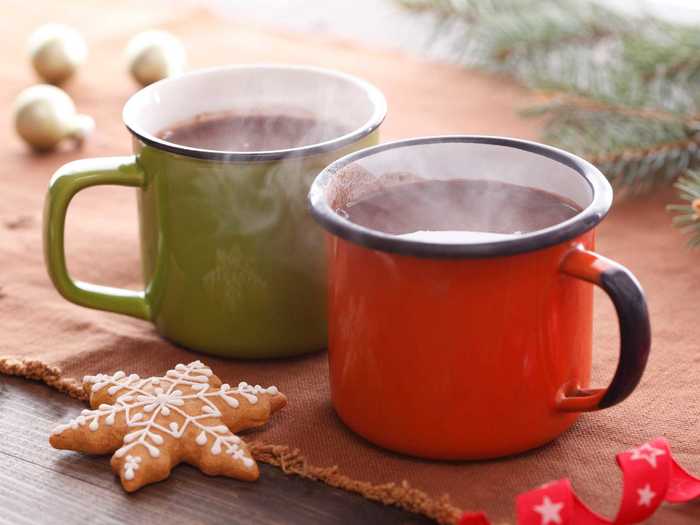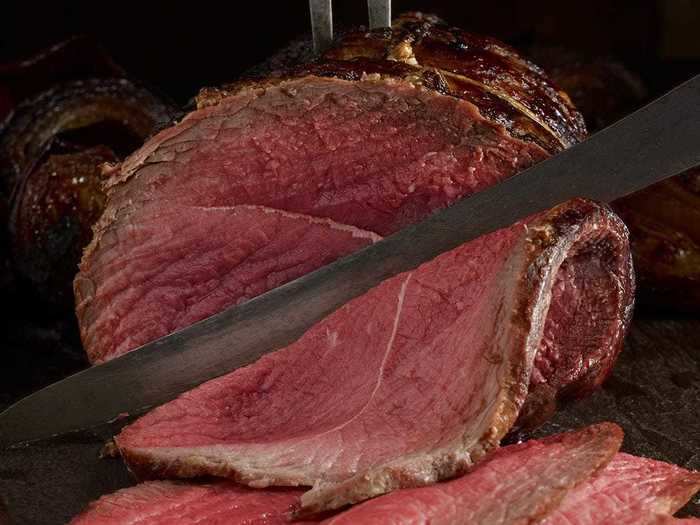1. Undercook chicken and brush it with paint
Chicken is often undercooked for the perfect shot.
CEWE
Most people are well aware that it can be very dangerous to undercook chicken, but doing so is actually a technique used when roasting a bird to be photographed, not eaten.
Undercooking the meat keeps the plump appearance, whereas a fully cooked chicken often shrinks and looks wrinkled, according to Atkinson.
They said the chicken cooked for photoshoots is often inedible.
"It is then usually browned with a variety of mixtures including paint, caramel, gravy-browning, marmite, and even boot polish," she said.
2. Stack pancakes with layers of cardboard
Pancakes are stacked with hidden layers of cardboard to look fluffier.
CEWE
Homemade pancakes rarely look as good as what's promised in recipe books, but this is because the latter are often stacked up with concealed cardboard circles between each pancake.
This gives each pancake extra space to look light and fluffy, instead of flat and sodden, according to Atkinson.
3. Use engine oil in place of maple syrup
Professionals don't use maple syrup at all — they use engine oil.
Pixel-Shot/Shutterstock
If you've ever tried to take the perfect pancake picture, you'll be well aware that you have just a split second to capture the maple syrup drizzle before it's absorbed and seems to disappear.
Professionals, however, don't use maple syrup at all — they use engine oil.
"Most food photographers actually use engine oil to drizzle over their pancakes as it doesn't absorb," Atkinson said.
They added: "If you're using fruit, try keeping it in place with tooth picks so they are beautifully balanced on the pancakes."
4. Add washing up liquid to beer
The perfect beer snap may not be all it seems.
Getty
That refreshing frothy beer probably wouldn't taste as nice as it looks due to a surprising ingredient.
"For the perfect pour of beer, food photographers often add a tiny squeeze of washing up liquid before the ale or lager is poured to get an extra frothy top," Atkinson said.
5. Use glue instead of milk on cereal
If the milk on this muesli looks too creamy to be real, it's because it's not real.
CEWE
Milk is rarely used when photographing cereal because it makes the food look mushy.
The alternative is far less appealing: glue.
"The professionals rarely use milk in the bowls, but actually glue," Atkinson said.
"This is because it helps to balance each wheat biscuit or cereal item on top.
"Milk tends to cause the cereal to sink and look soggy, whereas glue holds the cereal right on the surface and keeps it looking crisp and much better on camera."
6. Hide a hot wet cloth behind a hot drink
Even if your drink isn't steaming itself, you can fake it.
Getty
Trying to get the perfect cosy shot of a hot drink can take some time, and often by the time you get there it's cold.
What's a food photographer to do, then?
The answer is to create the illusion of a steaming drink by using a concealed hot, wet cloth, according to Atkinson.
"Microwave a wet cloth and place it directly behind your drink to get an extra plume of steam to add a really cosy atmosphere to the shoot," she said.
7. Brush meat with oil
Would you like a side of oil with your roast beef?
CEWE

